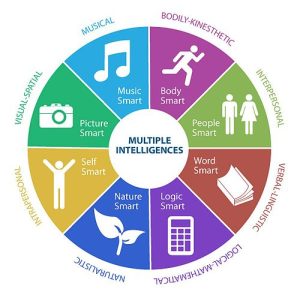6 Young Adulthood: 21 – 40 years
Jay Seitz
“I think what you learn through time is that you have the ability to regenerate if you put your heart and mind to it. You have to apply discipline, and get out of your own way.”
– Juliette Lewis (NYTimes, 12.27.2021; currently shooting “Yellowjackets” in New Orleans)
TABLE OF CONTENTS (TOC)
- Emerging adulthood
- Who do you want to be?
- Physical development and health
- Intelligence in life and work: What is it?
Emerging adulthood, early adult, or post-adolescence refers to a phase of the life span between late adolescence and early adulthood.
“Emerging adulthood is proposed as a new conception of development for the period from the late teens through the twenties, with a focus on ages 18–25. Evidence supports the idea that emerging adulthood is a distinct period demographically, subjectively, and in terms of identity explorations. A cultural context for emerging adulthood exists only in cultures that allow young people a prolonged period of independent role exploration during the late teens and twenties.”
– Jeffrey Arnett (Clark University)
Dr. Arnett suggests emerging adulthood is a distinct period between 18 and 29 years of age where young adults become more independent and explore sundry life possibilities. Yet, that being said, adult development has changed in recent decades in both the timing and sequencing of event milestones. For instance, events that have traditionally marked the transition to adulthood have evolved later around the world including completing one’s education, developing a career, as well as coupling up and producing offspring.
Who do you want to be?
According to Arnett, “To be a young American today is to experience both excitement and uneasiness, wide-open possibilities and confusion, new freedoms and new fears.”
Five characteristics are common to people between the ages of 18 – 29.
- Identity exploration: Who am I? Young adults try out various options in love and work.
- Instability: There is uncertainty about work and where to live or with who.
- Self-Focus: Obligations to others reach a low point in development.
- Feeling “In-Between: Young adults are in transition, neither adolescent nor adult.
- Possibilities/Optimism: Dreams are created and young adults have a great opportunity to transform their lives.
Physical development and health
Physical development in young adulthood refers to the physical and biological changes that occur in individuals. During young adulthood, individuals will reach their full height, gain muscle mass, increase body fat, and reach full reproductive maturity. Most individuals will experience their peak physiological functioning in aspects such as muscle strength, reaction time, agility, bone density, cardiac functioning, reproductive abilities, motor skills, and lung capacity during this stage of life. There will also be increased levels of autonomy, committed romantic relationships, participation in advanced education or the workforce, and taking on responsibilities for caring for others by contributing to a family or community.
Intelligence in life and work: What is it?
Two current theories on the nature of human intellect illuminate the challenges and opportunities of young adults.
Howard Gardner: Different forms of intelligence: The theory of multiple intelligences.

- Intelligence, according to the theory of multiple intelligences, is the ability to solve a problem or fashion a product valued in some culture or community.
- Natural kinds: Linguistic, logical-mathematical, spatial, bodily-kinesthetic, musical, intrapersonal (emotional), interpersonal (social), naturalist, and existential intelligence.
- These intelligences are independent but work together.
- Criteria: Isolation by brain damage, the existence of prodigies or idiot savants, core operations, developmental history, evolutionary history, support from psychological experiments, support from psychometric findings, and the capacity to be symbolized (letters, numbers, chemical symbols, and so on).
Robert Sternberg: Different components and processes of intelligence
- Intelligence, according the Triarchic Mind, is mental self-management skills.
- Mental components (Metacomponents, performance, and knowledge-acquisition components)
- Metacomponents: Plan, monitor, and evaluate problem-solving.
- Performance components: Implement commands of metacomponents.
- Knowledge-acquisition components: Processes used in gaining new knowledge.
-
-
- Sift out relevant from irrelevant information
- Combine information into a connected whole
- Relate newly acquired information to past information
-
- Context
-
-
- Adaptation (to some real-world environment)
- Selection
- Shaping
-
- Experience
-
-
- Ability to deal with novel kinds of tasks and situational demands
- Ability to automatize information processing
-
Sternberg categorizes intelligence into three (3) major parts:
- Analytical intelligence is the ability to complete academic, problem-solving tasks such as those used in traditional intelligence tests. These types of tasks usually present well-defined problems that have only a single correct answer.
- Creative or synthetic intelligence is the ability to successfully deal with new and unusual situations by drawing on existing knowledge and skills. Individuals high in creative intelligence may give ‘wrong’ answers because they see things from a different perspective.
- Practical intelligence is the ability to adapt to everyday life by drawing on existing knowledge and skills. Practical intelligence enables an individual to understand what needs to be done in a specific setting and then do it.
